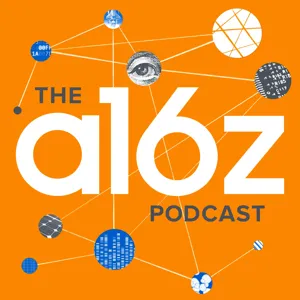Podcast Summary
Predicting and managing pandemics: The importance of testing and tracking networks: We could have better prepared for and managed the ongoing coronavirus pandemic with more investment in testing and tracking networks to identify and isolate cases early, provide treatment, and inform policy decisions.
The ongoing coronavirus pandemic could have been better predicted and managed if we had invested more in testing and tracking networks of spread. Sociologist and physician Nicholas Christakis, a guest on the 6 and z podcast, emphasizes that pandemics themselves are more predictable than most people realize, but the intensity and precise timing of their arrival can catch us off guard. In the past, we had warnings in the form of SARS in 2003 and H1N1 in 2009, but we didn't take them seriously due to the mild nature of those outbreaks. However, with the current pandemic, we're dealing with a serious pathogen that's afflicting a large number of people, and we're still flying blind due to the lack of proper testing and detection technology. Christakis and Jorge Conde, a 6 and z general partner, discuss how testing has multiple purposes, including identifying people who need treatment or quarantine and serving as an instrumentation function for policy makers. They lament the fact that we were caught off guard due to the missing pieces in our pandemic preparedness, including better detection technology and tracking networks. Christakis' work, including his app Hunala, aims to address these issues and provide early detection and rapid warning for pandemics.
Leveraging Crowdsourced Data for Disease Surveillance: Crowdsourced, privacy-respecting apps like Hunala can help identify disease hotspots and improve disease forecasting and intervention by combining objective and subjective data in real-time.
To effectively combat and manage the spread of diseases, we need more mechanisms and incentives for sharing data in real-time at all levels, from individuals to institutions and governments. Currently, the resolution and latency of existing disease tracking systems are insufficient for accurate forecasts and timely interventions. One promising approach is the use of crowdsourced, privacy-respecting apps like Hunala, which can help identify disease hotspots by leveraging the connections and information of central individuals in a network. This combination of objective and subjective data could lead to more accurate and timely disease forecasting and intervention. The ultimate goal is to create a comprehensive biosurveillance system, a "weather map" of health and disease, to better understand and respond to disease outbreaks in real-time.
Individual vs. Collective Perspective of COVID-19 and the Role of Symptom Check-in Apps: Symptom check-in apps serve both individual and collective needs during the COVID-19 pandemic. They provide immediate risk assessments based on location and social network, and the more users, the better they perform. Up to 50% of cases are asymptomatic, but they still contribute to the app's comprehensive understanding of the virus's spread.
The COVID-19 pandemic can be viewed from both an individual and a collective perspective. From an individual perspective, people want to know what's happening in their community and among their friends. From a collective perspective, public health authorities and hospital officials want to understand the bigger picture, such as where symptoms are most prevalent. The use of a symptom check-in app can serve both purposes. It provides immediate feedback on an individual's risk of infection based on their location and social network. The more people using the app, the better it performs, much like Waze for traffic estimation. However, a challenge is the assumption of network coverage and adoption. With a larger number of users, the app can provide more specific and accurate assessments. Additionally, it's important to note that up to 50% of coronavirus cases are asymptomatic. While these individuals may not contribute symptom data, they still benefit from the app and help build a more comprehensive understanding of the virus's spread.
Contributing to early detection and prediction of epidemics through individual data: Individuals' movements and behaviors can be used to forecast the spread of epidemics in real-time, allowing for more effective resource deployment and demand forecasting.
Our connections and interactions, even if we don't exhibit symptoms ourselves, can contribute valuable information to a system for early detection and prediction of epidemics. Using the analogy of a friend passing on a respiratory disease, the friend who doesn't show symptoms can still provide important information to the network, allowing others to be situationally aware and potentially identify infected individuals before they show symptoms. This is different from traditional early warning systems, which may take weeks to identify the location and spread of an epidemic. Instead, using data from individuals' movements and behaviors, it's possible to forecast the spread of an epidemic in real-time. This decentralized approach, where individuals contribute data voluntarily and anonymously, is more akin to Waze than a top-down solution, and can provide individuals with the added benefit of assessing their own risk. This collective effort can lead to more effective deployment of resources, such as PPE and ventilators, and help manufacturers forecast demand.
Balancing Public Health and Civil Liberties During a Crisis: Technology can aid in predicting virus spread while respecting civil liberties through voluntary data reporting and collaboration between private companies and researchers.
While technology can be a powerful tool in addressing public health crises like the COVID-19 pandemic, it's crucial to consider the potential risks to civil liberties. The use of large-scale data, such as population movements, can help predict the spread of the virus, but it's essential that this information is not monopolized by authoritarian governments. Instead, voluntary data reporting and collaboration between private companies and researchers can lead to accurate predictions without violating civil liberties. The ground truth, or objective reality of an individual's viral status, can be approximated through testing, but it's important to acknowledge the imperfections and limitations of these tests. By striking a balance between using technology to combat health crises and respecting civil liberties, we can effectively address public health issues while upholding individual privacy and freedoms.
Importance of non-test based methods in diagnosis and population health monitoring: Non-test based methods like taking a patient's history and physical symptoms, and metrics like excess deaths, provide valuable diagnostic and population health information, complementing testing.
Testing plays an important role in confirming diagnoses, but at both the individual and population levels, non-test based methods such as taking a patient's history and physical symptoms can provide valuable information. In fact, a significant percentage of diagnostic information comes from these methods. Furthermore, focusing on metrics like excess deaths can provide insight into the impact of an epidemic, even if not all cases are diagnosed or tested. The speaker personally believes that deaths are a harder endpoint to quantify, but an important one to follow. Despite the limitations of testing and diagnosis, it's important to remember that COVID-19 is a serious disease with significant morbidity and mortality. The CFR (case fatality rate) and IFR (infection fatality rate) are important metrics to consider when evaluating the severity of the virus. However, it's important to remember that these rates can vary based on a number of factors, including age, underlying health conditions, and access to healthcare. Ultimately, a comprehensive approach that utilizes both testing and non-test based methods, as well as a focus on important metrics like excess deaths, can provide valuable insights into the impact of the COVID-19 pandemic.
COVID-19 may be 10 times deadlier than the flu: COVID-19 is more deadly than the flu, with a case fatality rate between 0.31% and 1%. Older populations are at higher risk, and controlling its spread requires effective testing, tracing, and isolating infected individuals.
The COVID-19 virus is likely to be more deadly than the flu, with a case fatality rate estimated to be between 0.31% and 0.5%, possibly even 10 times deadlier on average. The older population is more at risk, and different strains of the virus may have varying degrees of deadliness. The case fatality rate is the probability of death given that someone sought medical attention, but not everyone does. A more comprehensive measure is the infection fatality rate, which is the fraction of people who die after being infected, estimated to be around 0.15-0.5%. The virus is expected to become endemic and seasonal, but controlling its spread requires effective testing, tracing, tracking, and isolating infected individuals. We are currently underprepared in this regard, and leading scientists are calling for a mobilization of resources to address this issue.
Using technology to track disease spread and inform policy decisions: Focus on proactive measures like testing, tracing, and isolating infected individuals to prevent further spread. Implement universal liability waivers and no-fault insurance to resume normal economy and change public health behaviors like mask-wearing and social distancing.
While technology such as contact tracing and Internet-connected thermometers can help identify and track the spread of disease, it's essential to focus on proactive measures like testing, tracing, and isolating infected individuals to prevent further spread. This approach creates a "living weather map" that can inform policy decisions and help individuals make safe choices regarding work, school, and social interactions. However, resuming a normal economy and changing public health behaviors like mask-wearing and social distancing will require accepting some level of risk and implementing universal liability waivers and no-fault insurance. Additionally, understanding and addressing the concept of super spreaders is crucial, as they can significantly impact the spread of disease. While super spreaders are outliers in any distribution, their high connectivity and proximity to others make them more likely to infect more individuals. By applying research on social contagion and population behavior change, we can work towards mitigating the impact of super spreaders and effectively combat the spread of disease.
Factors contributing to super spreading events: Super spreading events result from a mix of chance, biological, and social factors. Identifying super spreaders can aid in controlling epidemics, but predicting who they are is challenging due to the influence of various uncertainties.
Super spreading events in epidemics can be explained by a combination of factors including the pathogen, the host, the environment, and chance. Super spreaders are individuals who infect a disproportionately large number of people. Some super spreading events may be due to chance, while others may be influenced by biological or social factors. For instance, certain environments, such as compact spaces with poor ventilation, can facilitate the spread of the virus. Additionally, individual factors, such as sensitivity to the pathogen or behavior, can also contribute to super spreading. Identifying super spreaders in a network is possible, and their role can be forecasted in an epidemic. However, predicting who will be a super spreader is more challenging. While certain factors, such as high degree of connectivity, can be used as indicators, there is always a risk of bad actors skewing the data. Therefore, it's essential to consider multiple sources of data and employ robust data validation techniques to ensure the accuracy and reliability of the information.
The Human Species: More Good Than Bad: Though individuals may act against the greater good, humanity's capacity for love, friendship, cooperation, and teaching outweighs negative traits. Engage with challenges, like the pandemic, acknowledging objective reality and harnessing good qualities to overcome adversity.
While there are individuals who may act against the greater good, such as Typhoid Mary who refused quarantine and spread disease, the human species as a whole possesses more good qualities than bad. Optimism about our capacity for love, friendship, cooperation, and teaching outweighs the negative traits like evil, violence, selfishness, and hatred. However, it's essential to acknowledge the existence of an objective reality, which some on the far left and right deny at their own peril. Despite living with the virus for an extended period, there is hope that we will find a way to coexist with it. The denial of objective reality does not make it disappear. Therefore, it's crucial to engage with the challenges we face, such as the ongoing pandemic, with a clear understanding of the objective reality and the collective power of good qualities to overcome adversity.






